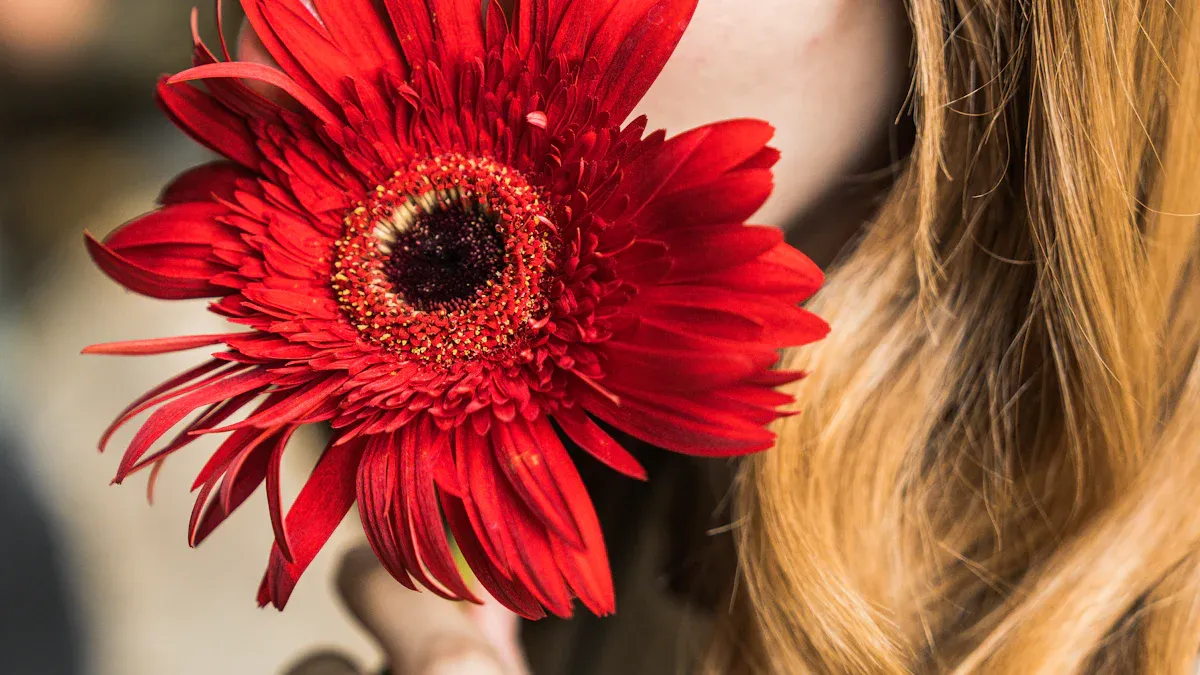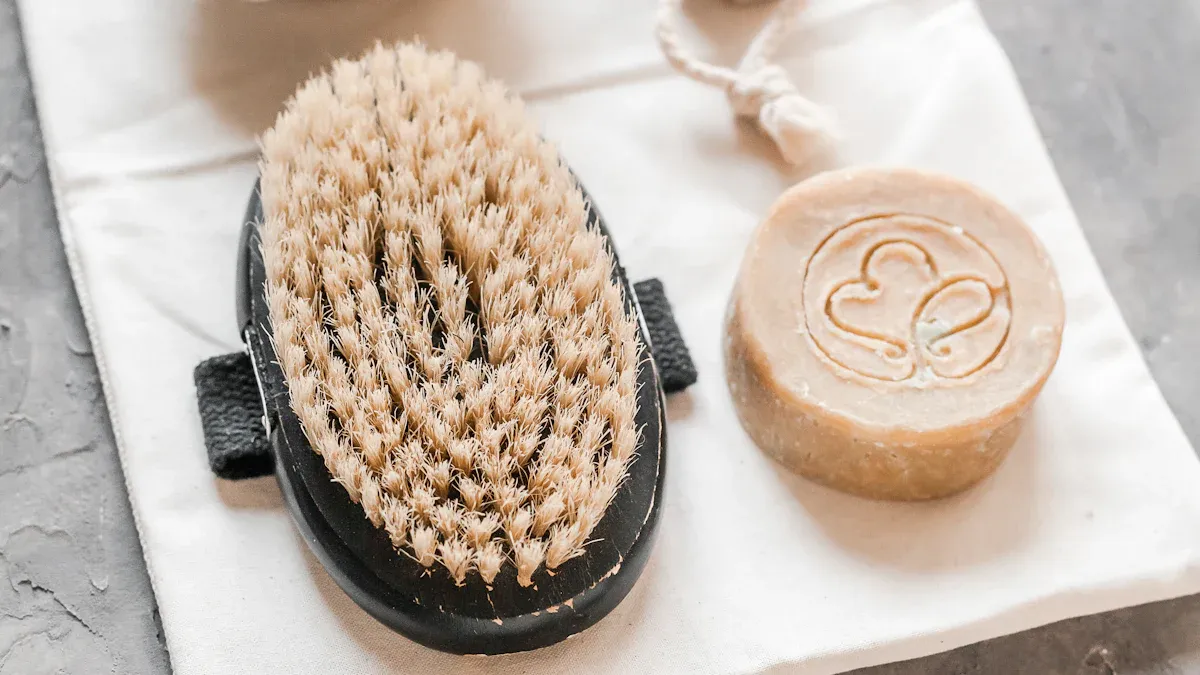How to prepare for the first menstruation
Dr. Maria Lourdes Solidum is a board-certified OB/GYN based in Quezon City.

First-time menstruation can feel like a big deal, but it’s a natural part of growing up. Most people get their first period between ages 11 and 14, though some may experience it earlier. Did you know the average age for menstruation has dropped from 12.5 years to 11.9 years over the decades? It’s okay to feel nervous, but being prepared makes all the difference.
Key Takeaways
Notice signs like growing breasts and mood swings before your period. Keeping track of these signs can make you feel ready.
Make a period kit with pads, pain medicine, and hygiene items. Being ready can help you feel less worried when it starts.
Try using pads or tampons before your first period. This can make you feel more confident and prepared.
Recognizing the Signs of First-Time Menstruation
Physical changes during puberty
Puberty brings many changes to your body, and these changes are signs that your first menstruation might be near. You may notice your breasts starting to develop, which is often one of the earliest signs of puberty. Hair growth under your arms and around your pubic area is another common change. Your body shape might also begin to shift, with your hips becoming wider. These changes are completely normal and show that your body is preparing for menstruation.
Common signs that your first period is approaching
So, what are the symptoms of periods that you might notice before your first-time menstruation? About one to two weeks before bleeding starts, you may experience physical and mood changes. These can include:
Mild cramps or a heavy feeling in your lower abdomen.
Tenderness in your breasts.
A sudden increase in acne or oily skin.
Feeling more emotional or irritable than usual.
These signs are your body’s way of letting you know that your first period is on its way. It’s a good idea to keep track of these changes so you can feel more prepared.
Typical age range for the first period
The age when girls get their first menstruation can vary, but most experience it between 11 and 14 years old. However, some may start earlier or later. Here’s a look at how the average age has changed over time:
Year Range | Percentage of Early Menarche (before age 11) | Percentage of Very Early Menarche (before age 9) | |
|---|---|---|---|
1950-1969 | 12.5 years | 8.6% | 0.6% |
2000-2005 | 11.9 years | 15.5% | 1.4% |
If you’re younger than 11 or older than 14 and haven’t had your first period yet, don’t worry. Every body is different, and your timeline is unique to you.
How to Prepare for Your First Period

Assembling a period kit: Essentials to include
Having a period kit ready can make your first-time menstruation less stressful. Think of it as your go-to bag for any situation. Here’s a list of must-have supplies to include:
Sanitary products: Pack a mix of pads and tampons in different sizes. If you’re eco-conscious, reusable pads or menstrual cups are great options.
Pain relief medication: Over-the-counter options like ibuprofen can help ease cramps.
Heating pads or patches: These are lifesavers for soothing abdominal pain.
Hygiene products: Wet wipes or feminine hygiene wipes keep you feeling fresh.
Spare underwear: Always have an extra pair in case of leaks.
A small zippered pouch: Use this to keep everything organized and easy to carry.
Having these items on hand ensures you’re prepared for your first period, no matter where you are.
Understanding and choosing menstrual products
Choosing the right product depends on your comfort and lifestyle. Pads are the most popular option for first-time menstruation. They’re worn externally and come in various absorbencies. Tampons are inserted into the vagina and are convenient for active girls, but they need to be changed regularly to avoid risks like toxic shock syndrome. Menstrual cups, made from silicone or rubber, are reusable and eco-friendly. They can last for years and are a great choice if you want a sustainable option.
When deciding, think about your flow, comfort level, and daily activities. For lighter days, pads or period underwear might work best. If you prefer fewer changes throughout the day, a menstrual cup could be ideal. It’s all about what feels right for you.
Practicing how to use pads, tampons, or menstrual cups
Before your first menstruation, it’s a good idea to practice using these products. Start with pads since they’re the easiest to use. Open one, peel off the backing, and stick it to your underwear. For tampons, read the instructions carefully. Practice inserting one when you feel ready. If you’re curious about menstrual cups, watch tutorials or ask a trusted adult for guidance.
Practicing helps you feel more confident and prepared. Remember, it’s okay to take your time to figure out what works best for you.
Managing Symptoms and Emotional Changes
Relieving cramps and physical discomfort
Cramps can feel uncomfortable, but there are several ways to ease the pain. Exercise might not sound appealing during your period, but it can actually help. Moving your body releases hormones that reduce pain and make you feel better. Yoga is another great option. Practicing yoga regularly can significantly reduce cramps over time.
Applying heat to your lower abdomen is a quick and effective way to relieve discomfort. A heating pad or even a warm water bottle can work wonders. Just place it on your belly for about 20 minutes to feel the difference. You can also try natural remedies like cinnamon or ginger tea. These herbs are known to calm menstrual cramps and help you relax.
If you’re open to alternative methods, acupuncture has been shown to reduce pain more effectively than some medications. It’s worth exploring if cramps become too intense.
Coping with mood swings and emotional shifts
Periods can bring emotional ups and downs. You might feel irritable, sad, or even overwhelmed. That’s completely normal. When emotions run high, take a moment to breathe and focus on yourself. Journaling your feelings or listening to your favorite music can help you feel grounded.
Talking to someone you trust can also make a big difference. Sharing how you feel with a friend or family member can lighten the emotional load. Remember, you’re not alone in this.
Seeking support from trusted adults or friends
Don’t hesitate to reach out for support when you need it. Trusted adults like your parents, teachers, or school nurse can provide guidance and reassurance. They’ve likely been through this themselves and can help you manage her periods with confidence.
Friends can also be a great source of support. Many girls experience similar challenges during their first-time menstruation. Sharing tips or simply talking about it can make you feel more connected and less anxious.
Tip: Keep open communication with those around you. It’s okay to ask questions or seek advice. Support is always there when you need it.
Maintaining Menstrual Hygiene and Choosing the Right Products

Tips for staying clean and fresh during your period
Staying clean during your period is essential for your comfort and health. Changing your menstrual products regularly is the first step. Pads and tampons should be replaced every 4-6 hours, even if your flow is light. This helps prevent odors and keeps you feeling fresh. If you’re using a menstrual cup, empty and rinse it at least twice a day.
Washing your intimate area daily with warm water is another good habit. Avoid using scented soaps or products, as they can irritate your skin. Instead, stick to mild, unscented cleansers. Carrying wet wipes in your period kit can also help you freshen up when you’re on the go.
Tip: Always wash your hands before and after changing your menstrual products to maintain proper menstrual hygiene.
Selecting the best product for your comfort and lifestyle
Choosing the right product depends on what feels best for you. Here are some options:
Tampons: Great for active lifestyles but may not suit everyone.
Pads: A popular external option that’s easy to use.
Period Underwear: Reusable and eco-friendly, perfect for light days.
Menstrual Cups: Hold more fluid and require fewer changes, ideal for busy days.
Experiment with different products to find what works for your flow and daily routine. Good instructions on how to use each product can make the process easier.
Addressing concerns about leaks and odor
Leaks and odor can feel embarrassing, but they’re manageable. To avoid leaks, choose products with the right absorbency for your flow. On heavier days, consider using a pad with wings or pairing a tampon with period underwear for extra protection.
Odor is usually caused by bacteria, so changing your products often and practicing good menstrual hygiene can help. If you’re worried, keep a spare product and a change of underwear in your bag for emergencies.
Remember: Leaks and odor are normal. With the right precautions, you can stay confident and comfortable.
Breaking Taboos Around First-Time Menstruation
The importance of open conversations about menstruation
Talking about periods openly is essential, especially for first-time menstruation. It helps you feel informed and supported. When schools don’t provide enough education, conversations with family or friends can fill those gaps. You might feel more comfortable discussing menstruation with someone close to you rather than a teacher. That’s okay! Everyone’s comfort level is different.
Creating an open dialogue also helps break the stigma around periods. It’s important to remember that menstruation is a natural process. By talking about it, you help normalize the experience for yourself and others.
Tip: If you’re unsure how to start, ask questions or share your feelings with someone you trust. They’re there to support you.
How to talk to family, friends, or teachers about your period
Starting conversations about periods early can make them feel less awkward. If you’re talking to your family, let them know how they can help your daughter or you feel prepared. Friends can also be a great source of support. Share your experiences or ask for advice.
When discussing periods with teachers, keep it simple. Let them know if you need help or extra time during class. Including boys and men in these conversations is just as important. It helps them understand menstruation better and reduces stigma.
Here’s a quick guide to starting these discussions:
Strategy | Description |
|---|---|
Open Dialogue | Encourage open conversations to combat taboos and misinformation. |
Education | Share accurate information to prepare yourself and others. |
Support | Create a safe space where you feel comfortable discussing your experience. |
Dispelling myths and challenging stigmas
Many myths about menstruation still exist, but you can help challenge them. For example:
Myth: You can’t get pregnant during your period.
Fact: While it’s less likely, pregnancy is still possible if sperm is present.Myth: Period blood is dirty blood.
Fact: It’s a natural mix of blood, tissue, and mucus, not harmful or impure.
By learning the facts, you can feel more confident and help others understand the truth. Remember, menstruation is a normal part of life. The more you talk about it, the easier it becomes to break the stigma.
Your first period is a big step, but recognizing the signs and preparing ahead can make it easier. By managing symptoms and choosing the right products, you’ll feel more in control.
It’s okay to feel nervous. Everyone does at first!
Embrace this milestone with confidence. You’ve got this! 😊
FAQ
What should I do if my first period starts at school?
Stay calm. Use your period kit if you have one. If not, ask a teacher or friend for help. Schools often have supplies available.
Is it normal to feel nervous about the age of first period?
Yes, it’s completely normal! Everyone’s body is different. Most girls get their first period between 11 and 14, but earlier or later is okay too.
How can I track my periods?
Use a calendar or a period-tracking app. Mark the start and end dates to understand your cycle better. This helps you prepare for future periods.
See Also
Addressing 5 Frequent Skin Issues in Filipino Kids
5 Important Advantages of Breastfeeding for Mothers and Children

